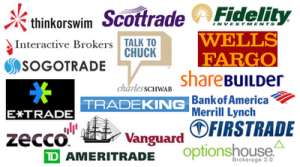Alma Aguilar, who works for a cloud-storage software firm in Austin, recently asked me what I thought about Ellavest. Aguilar had heard about the woman-oriented roboadvising software service after following founder Sallie Krawcheck’s short video offerings “Money in 60 Seconds.” Aguilar, married and the mother of a one year-old, wondered if she should branch out her investing activities beyond the 401(k) retirement plan she contributes to at work.
My confession to Aguilar: I’d never heard of it.
Ellavest has been growing and evolving since 2016. For those looking for an easy on-ramp to investing, my sense is this is worth checking out.
One of the clever features of roboadvising apps is that they enroll you in savings or investing right away from the initial interactions with the website or phone app. Like similar finance apps I use and recommend, such as Acorns, M1 Finance, and Qapital, Ellavest asked me for my name, zipcode, household income, and financial goals. Unlike those, Ellavest also asked about my gender and number of children.
Although Ellavest is targeted for women, the app allowed me to enroll online as a male.
As I type this, I imagine the Texas legislature is meeting to pass emergency laws to prevent me from entering a woman-oriented finance app as a male-bodied person. But that’s another story for another time.
Do women want, or need, an investment advisor targeted to them? I don’t know if most women do, but likely some will.

Kathleen Burns Kingsbury, a Vermont-based consultant and wealth psychologist who literally wrote a book called How To Give Financial Advice To Women, is open to the idea that women approach their finances differently. She pointed me to research by Merrill Lynch, which found women nearly three times more likely than men to have had a negative gender stereotype experience with their financial advisor. The Merrill study also found that when a mixed-gender couple sits in front of an advisor, the man typically commands 60 percent of the advisor’s attention, compared to 40 percent for the woman.
As I enrolled, the Ellavest app asked about my financial goals, and also about what my biggest obstacles may be. The menu of choices include “navigate a career change,” “feel confident negotiating,” or “tackle imposter syndrome.” While these are universal human challenges, they also struck me as signals to women that the designers of this app understand their particular perspective.
Roboinvesting, by theory and design, means setting up an investment account that does not need to involve speaking to another human. Typically we interact with roboadvising software on our phones, with small initial dollar amounts, and receive simple investment plans automatically from a few data points about our goals, risk tolerance, income, time horizon, and life status.

I ascribe to the idea that – done correctly – the hardest part of investing is just getting started. For that reason alone, I am a proponent for setting up a simple plan with a roboadvisor, and then getting out of the way of our own tendency to mess with the plan. Ellavest appears solidly aligned with this goal and method.
What you should never do on your financial phone app – and I cannot emphasize this strongly enough – is daytrade Game Stop shares because anonymous poster u/FartStocks told you on a Reddit forum that you could stick it to some some imagined short-selling hedge fund. But I digress.
Ellavest’s stated goal of appealing to women as they ramp up investing seems laudable.
About her retirement programs at work, Aguilar told me “none of them have been easy to navigate or understand. Ellevest makes it easy and clear to get set up and start investing.”
Something about the educational content of Ellevest also appealed to her. As Aguilar told me “I quickly appreciated that the investment algorithm takes into account a woman’s issues such as the gender pay gap and longer life expectancy. They also do a great job at educating women about why it is important for them to take charge of their finances.”
Kingsbury pointed out that the right way to think about tailoring financial advice to women might be mis-stated. As Kingsbury says, “In the future, I think we will move to services that are more human-centric, rather than gendered.” Kingsbury noted that one person’s experience in the world may be quite different from someone else’s, so that a one-size fits all approach doesn’t work.
“That may be an argument for a woman-centered roboadvisor. It may also be an argument for a human investment advisor,” says Kingsbury.
In addition to clearly-stated and fixed monthly fees (which I like!) the Ellavest site offers coaching sessions, something that I happen to think is a highly useful financial service that most humans – however gendered – need.
The Ellavest signup presents plans for $1/month, $5/month, or $9/month with a heightened suite of services at the top price point. The $1/month cost is in line with other roboadvising services Once you’ve accumulated at least $1,000 or more, the fees become moderate. As with most investing costs, they come down as a % of assets as assets increase.
Also, given the gender pay gap, will the software would be content to receive on average 82 percent of what a male-oriented roboadvisor charges?
What? I’m just asking the question.
A version of this post ran in the San Antonio Express News.
Please see related posts on Roboadvisors:
About Qapital
About M1 Finance
About Acorns (This one is my favorite)
About Robinhood (This one is my least favorite)
Post read (140) times.






